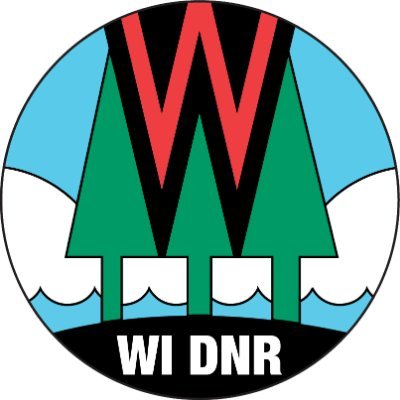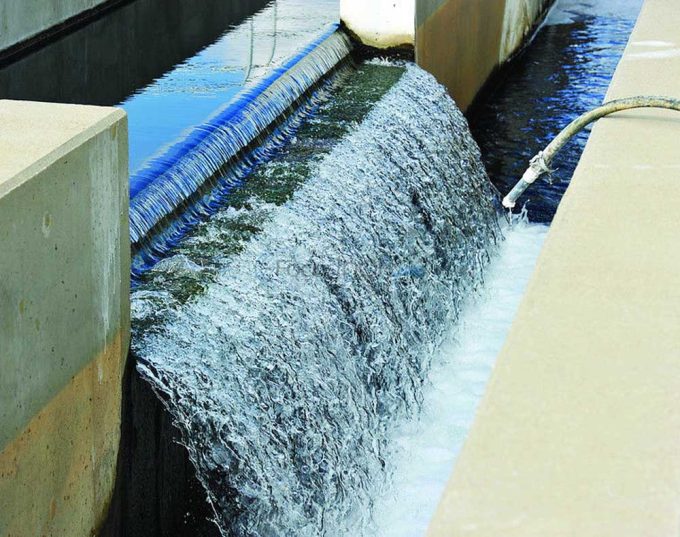Report on the Sustainable Development Implications of Data Centre Expansion in Canada
1.0 Introduction: Economic Growth vs. Environmental Stewardship
Canada is actively encouraging investment in hyperscale data centres, positioning itself as a favorable location due to its cool climate and access to affordable energy. This strategy aligns with aspects of SDG 8 (Decent Work and Economic Growth) and SDG 9 (Industry, Innovation and Infrastructure) by aiming to attract “jobs of the future” and modernize local economies. However, the rapid expansion of this industry, particularly driven by Artificial Intelligence (AI), presents significant challenges to several Sustainable Development Goals, most notably SDG 6 (Clean Water and Sanitation) and SDG 11 (Sustainable Cities and Communities). Community opposition is emerging in locations such as Nanaimo, B.C., highlighting a growing conflict between technological development and the sustainable management of natural resources.
2.0 Analysis of Impacts on Sustainable Development Goals (SDGs)
2.1 SDG 6: Clean Water and Sanitation
The operational requirements of data centres place a direct and substantial strain on freshwater resources, undermining progress toward SDG 6.
- High Water Consumption: Data centres utilize vast quantities of potable water for cooling systems. A 200,000-square-foot facility can consume approximately 70,000 litres of drinking water daily.
- Global Scale: In 2023, the International Energy Agency estimated that data centres worldwide consumed 140 billion litres of water for cooling alone, much of it drawn from municipal supplies.
- AI’s Water Footprint: Research indicates that generating 10 to 50 responses from an AI chatbot like ChatGPT can consume up to 500 millilitres of water, illustrating the resource intensity of AI computation.
2.2 SDG 9: Industry, Innovation, and Sustainable Infrastructure
While data centres are a cornerstone of modern digital infrastructure, their current development trajectory in Canada raises questions about sustainability and resilience, key targets of SDG 9.
- Infrastructure Strain: The immense water and energy demands can strain municipal infrastructure, potentially compromising services for residents and other industries.
- Sustainable Design Claims: Companies like Microsoft assert that new Canadian facilities will utilize “free air cooling” and recycled rainwater to minimize reliance on municipal water. However, past discrepancies between projected and actual water use in other jurisdictions, such as the Netherlands, call for stringent verification and monitoring.
- Lack of Integrated Planning: The federal government has allocated $700 million to support data centre projects, yet there is a lack of corresponding federal oversight to ensure this new infrastructure is developed in a sustainable and environmentally responsible manner.
2.3 SDG 11 & SDG 12: Sustainable Communities and Responsible Consumption
The siting and operation of data centres have direct impacts on local communities and challenge patterns of responsible consumption and production.
- Community Conflict: Public opposition is growing globally due to concerns over water scarcity. Successful campaigns in locations like Indianapolis, Indiana, have halted data centre construction, demonstrating a disconnect between corporate goals and community well-being (SDG 11).
- Lack of Transparency: A significant barrier to achieving SDG 12 (Responsible Consumption and Production) is the lack of transparency from tech companies regarding resource usage. Instances of corporations actively concealing water consumption data, as seen with Google in Oregon, undermine public trust and accountability.
- Inequitable Resource Allocation: In Varennes, Quebec, an Amazon Web Services data centre has operated without a water meter, paying a nominal flat rate of $153 for water in 2023. This practice fails to reflect the true value and scarcity of water, contradicting the principles of responsible resource management.
3.0 Governance and Accountability Gaps
3.1 Regulatory Oversight
Canada’s regulatory framework has not kept pace with the rapid growth of the data centre industry, creating significant governance gaps that threaten sustainable development.
- There is minimal specific regulation governing water consumption by data centres at the federal or provincial level.
- Oversight is largely limited to energy regulators reviewing applications for connection to power grids, with little to no assessment of water or broader environmental impacts.
- Municipalities often lack the expertise or authority to hold large tech corporations accountable for their resource consumption and environmental commitments.
3.2 Corporate Accountability and Social License
The industry’s tendency to obscure its environmental footprint jeopardizes its social license to operate and conflicts with SDG 16 (Peace, Justice and Strong Institutions), which calls for accountable and transparent institutions at all levels.
- Experts, including former industry insiders, warn that a lack of transparency regarding water usage is an industry-wide problem that erodes public trust.
- Without mandatory disclosure and accurate monitoring, promises of sustainable operations remain unverifiable, potentially leading to irreversible environmental damage in host communities.
4.0 Conclusion
The expansion of the data centre industry in Canada represents a critical juncture where the pursuit of SDG 8 and SDG 9 directly intersects with the urgent need to protect SDG 6, SDG 11, and SDG 12. The current approach, characterized by a lack of regulation, minimal transparency, and significant environmental risks, is unsustainable. To ensure that technological advancement contributes positively to national development, it is imperative to establish robust governance frameworks that mandate transparency, enforce sustainable resource management, and prioritize the long-term well-being of communities and ecosystems.
Analysis of Sustainable Development Goals in the Article
1. Which SDGs are addressed or connected to the issues highlighted in the article?
- SDG 6: Clean Water and Sanitation: This is the central theme of the article. It focuses on the massive consumption of fresh, potable water by data centers for cooling, the strain this puts on municipal water supplies, and the lack of regulation, especially in regions facing drought.
- SDG 8: Decent Work and Economic Growth: The article presents the conflict between economic development and environmental sustainability. Proponents, like the mayor of Nanaimo, view data centers as a way to “modernize the city’s economy” and create “jobs of the future,” aligning with the goal of promoting economic growth.
- SDG 9: Industry, Innovation, and Infrastructure: Data centers are a critical component of modern digital infrastructure. The article discusses Canada’s push to build this infrastructure to support the AI and tech industries, but it questions the sustainability and resilience of these projects due to their high resource consumption.
- SDG 11: Sustainable Cities and Communities: The debate over data centers is happening at the local, municipal level. The article highlights issues of urban planning, resource management (water), and the capacity for “participatory” and “integrated” planning, contrasting the active community resistance in Nanaimo with the lack of public awareness in Etobicoke.
- SDG 12: Responsible Consumption and Production: The article scrutinizes the production patterns of the tech industry, specifically the inefficient use of natural resources (water and energy) to power AI and cloud computing. It also emphasizes the lack of corporate transparency and reporting on resource consumption, which is a key aspect of this goal.
- SDG 13: Climate Action: Although the primary focus is water, climate action is an underlying theme. The article mentions that Canada’s “cool climate” is an advantage for data centers, and it discusses the issue of “drought” in Nanaimo, which is a direct impact of climate change. The high energy consumption of data centers is also intrinsically linked to climate action.
2. What specific targets under those SDGs can be identified based on the article’s content?
- SDG 6: Clean Water and Sanitation
- Target 6.4: “By 2030, substantially increase water-use efficiency across all sectors and ensure sustainable withdrawals and supply of freshwater to address water scarcity…” The article directly addresses this by detailing the immense water consumption of data centers (e.g., “1.2 billion litres a year” in Etobicoke) and the concerns of local residents about water scarcity in a “region beset by drought.”
- Target 6.5: “By 2030, implement integrated water resources management at all levels…” The article points to a failure to meet this target, stating, “Canada is jumping into the AI construction race with few mechanisms to protect its water supply” and “There’s barely any regulation in place.”
- SDG 8: Decent Work and Economic Growth
- Target 8.4: “Improve progressively, through 2030, global resource efficiency in consumption and production and endeavour to decouple economic growth from environmental degradation…” The core conflict described in the article is the tension between the economic benefits of data centers and the environmental degradation caused by their high water consumption, questioning whether this growth is sustainable.
- SDG 9: Industry, Innovation, and Infrastructure
- Target 9.4: “By 2030, upgrade infrastructure and retrofit industries to make them sustainable, with increased resource-use efficiency…” The article discusses Microsoft’s claims of building more sustainable data centers that use “free air cooling” and “recycled rainwater.” However, it also casts doubt on these claims by citing a case in the Netherlands where a Microsoft facility “was consuming more than four times” its initial water estimate.
- SDG 11: Sustainable Cities and Communities
- Target 11.3: “By 2030, enhance inclusive and sustainable urbanization and capacity for participatory, integrated and sustainable human settlement planning and management…” The article showcases this target through the actions of citizens like Kathryn Barnwell in Nanaimo and protesters in Indianapolis, who are actively participating in the planning process to oppose unsustainable projects.
- SDG 12: Responsible Consumption and Production
- Target 12.2: “By 2030, achieve the sustainable management and efficient use of natural resources.” The article’s entire premise is about the inefficient and potentially unsustainable use of potable water by the data center industry.
- Target 12.6: “Encourage companies, especially large and transnational companies, to adopt sustainable practices and to integrate sustainability information into their reporting cycle.” The article explicitly highlights the failure of companies to meet this target, stating, “None of the big tech companies provide detailed breakdowns of their water usage by facility” and mentioning Google’s lawsuit to prevent the disclosure of its water consumption data.
3. Are there any indicators mentioned or implied in the article that can be used to measure progress towards the identified targets?
- For Target 6.4 (Water-use efficiency and scarcity)
- Quantitative Indicators: The article provides specific figures that can be used to measure water consumption and stress.
- Volume of water consumed by a single facility: “70,000 litres of potable water a day” (Nanaimo estimate), “1.2 billion litres a year” (Etobicoke), “730 million litres of water annually” (Vaughan).
- Global industry consumption: “140 billion litres of water” in 2023 for cooling alone.
- Proportion of municipal water use: A Google data center accounted for “a quarter of the city’s water use in 2021” in an Oregon city.
- Quantitative Indicators: The article provides specific figures that can be used to measure water consumption and stress.
- For Target 9.4 (Sustainable infrastructure)
- Qualitative Indicators: The adoption of sustainable technologies is an indicator. Microsoft’s claim to use “free air cooling” and “recycled rainwater” is a measure of progress, while the revelation that its Dutch facility used four times the promised amount of water is an indicator of failure to meet sustainability commitments.
- For Target 12.6 (Corporate sustainability reporting)
- Qualitative Indicators: The level of corporate transparency is a key indicator. The article points to a negative trend, noting that companies “actively resist attempts for more disclosure.”
- Physical Indicators: The absence of monitoring infrastructure, such as the Amazon facility in Varennes, Que., which “is not equipped with a water meter,” is a direct physical indicator of the inability to report on or even measure water consumption.
Table of SDGs, Targets, and Indicators
| SDGs | Targets | Indicators Identified in the Article |
|---|---|---|
| SDG 6: Clean Water and Sanitation | 6.4: Increase water-use efficiency and address water scarcity. |
|
| SDG 9: Industry, Innovation and Infrastructure | 9.4: Upgrade infrastructure to be sustainable and resource-efficient. |
|
| SDG 11: Sustainable Cities and Communities | 11.3: Enhance inclusive and participatory sustainable urban planning. |
|
| SDG 12: Responsible Consumption and Production | 12.6: Encourage companies to adopt sustainable practices and integrate sustainability reporting. |
|
Source: cbc.ca







